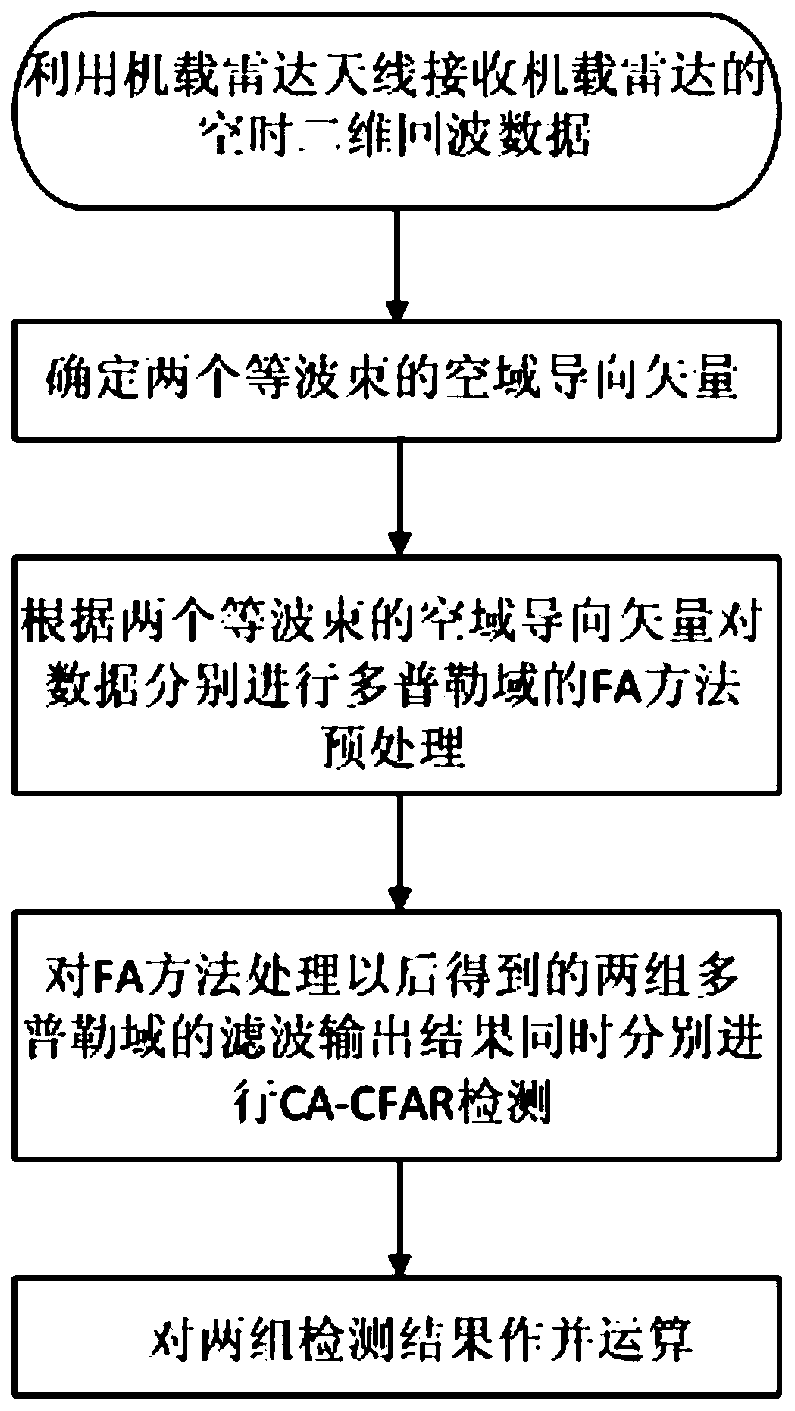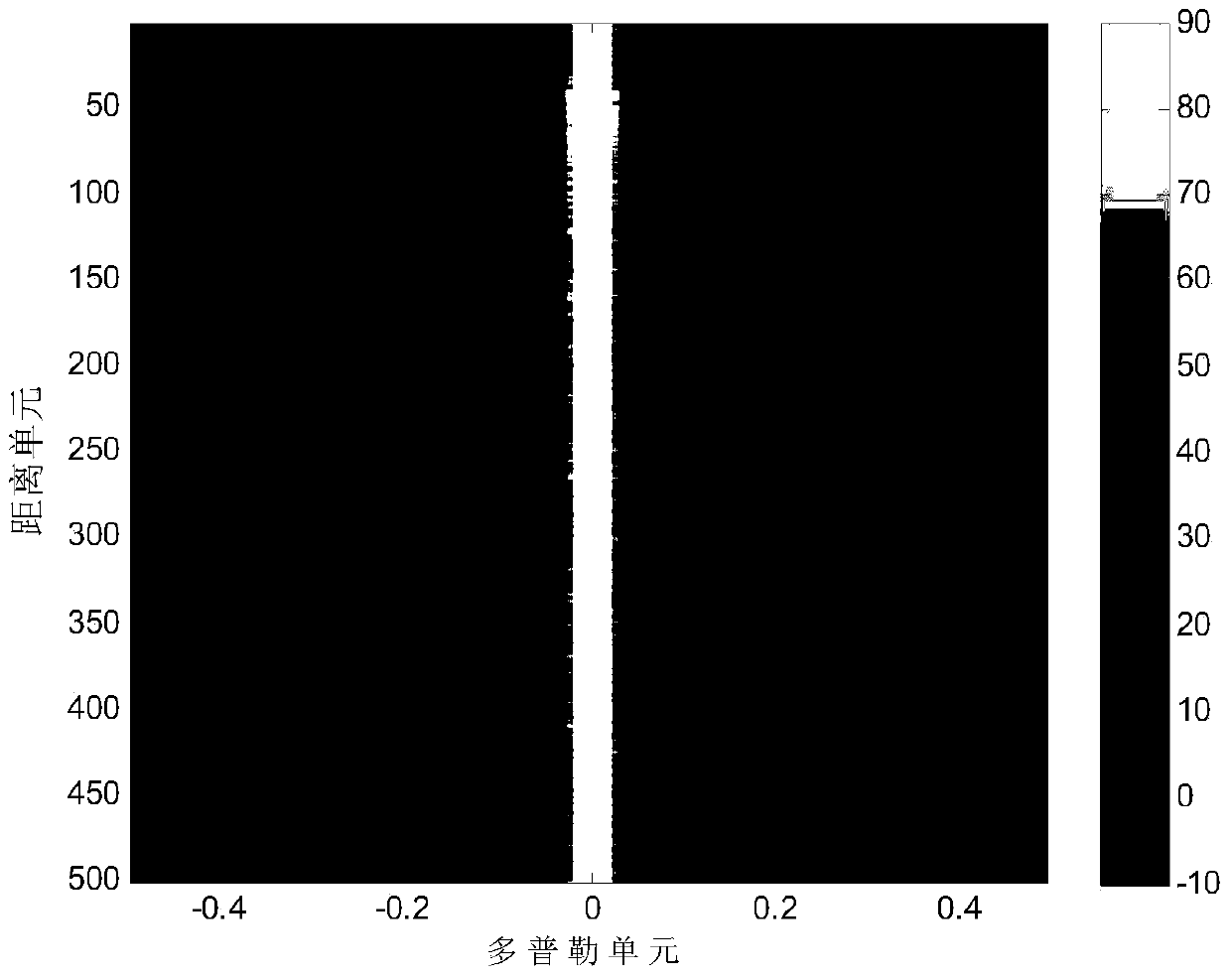Target joint detection method based on self-adaptive dual pointing and difference beam for airborne radar
An airborne radar and joint detection technology, applied in radio wave measurement systems, instruments, etc., can solve problems such as detection performance degradation, and achieve the effect of improving detection performance and improving target detection performance.
- Summary
- Abstract
- Description
- Claims
- Application Information
AI Technical Summary
Problems solved by technology
Method used
Image
Examples
Embodiment Construction
[0021] The present invention will be further explained below in conjunction with the drawings:
[0022] Reference figure 1 , Is the flow chart of the target joint detection method of adaptive bidirectional and difference beam for airborne radar of the present invention. The airborne radar adaptive dual-point and difference beam target joint detection method includes the following steps:
[0023] Step 1. Use the receiving array of the airborne radar to receive space-time two-dimensional echo data; the receiving array of the airborne radar is a uniform linear array composed of N array elements.
[0024] Specifically, the airborne radar works in the front and side view mode, and the receiving array of the airborne radar is a uniform linear array composed of N array elements; when the airborne radar is working, the airborne radar is used to transmit signals outward, and the M Within the coherent accumulation time of two pulses, the receiving array of the airborne radar is used to recei...
PUM
 Login to View More
Login to View More Abstract
Description
Claims
Application Information
 Login to View More
Login to View More - R&D
- Intellectual Property
- Life Sciences
- Materials
- Tech Scout
- Unparalleled Data Quality
- Higher Quality Content
- 60% Fewer Hallucinations
Browse by: Latest US Patents, China's latest patents, Technical Efficacy Thesaurus, Application Domain, Technology Topic, Popular Technical Reports.
© 2025 PatSnap. All rights reserved.Legal|Privacy policy|Modern Slavery Act Transparency Statement|Sitemap|About US| Contact US: help@patsnap.com



